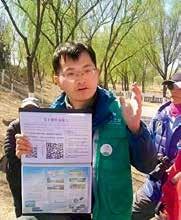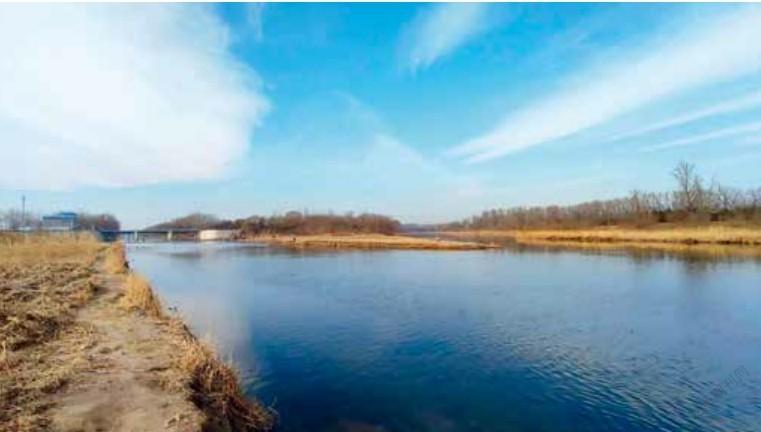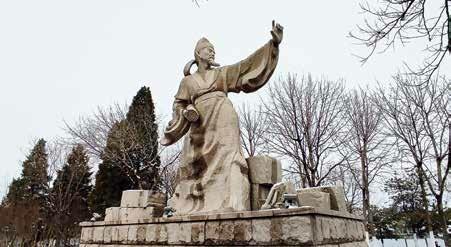River Guardians
by Li Yuqiang

Beijing is built on water and continues to thrive on it. For centuries, water bodies like rivers and lakes determined the location, layout, and formation of the central axis of Beijing. My engagement in Beijings water protection campaign helped me grasp the ancient citys wisdom of water management over the past eight centuries since 1153 when it became the capital of the Jin Dynasty (1115-1234). I also experienced the natural beauty of rivers in Beijing first-hand and witnessed the evolution of the citys Qinghe River and its guardians when exploring ways to engage the public in river management and protection.
In 2014, Friends of Nature (FON), one of the earliest environmental protection organizations in China, launched a research and protection program on the Qinghe River, and I joined two years later. “Only if we understand, can we care,” said British ethologist Jane Goodall.“Only if we care, we will help. Only if we help, we shall be saved.”Goodalls feelings became clearer and clearer to me as I got more deeply involved in the river protection from volunteer to worker, program consultant, and now campaigner.
A glance at the map of Beijing shows many winding rivers. According to a 2019 report on water ecology monitoring and health evaluation in Beijing, a total of 425 rivers belonging to five water systems flow through the city. Some places in Beijing are named after the Qinghe River, like Qinghe Sub-district and Qinghe Bridge. My stories began with this river.
The Qinghe River was once polluted because of urban economic development and population expansion. Despite pollution control and ecological remediation efforts in recent decades, the water quality of the river has not always been good. The purpose of FONs Qinghe program is to keep the river clean all the time.

Participants in the Qinghe program researched and analyzed the river from 2014 to 2019. Starting with basic information on the river course, fieldworkers checked water quality, visited water reclamation plants, studied the river ecosystem and biodiversity, investigated river garbage generation and cleaning, and explored the man-river relationship along the Qinghe River. The team helped make transparent the application information for sewage outfall along the Qinghe River, analyzed the biodiversity of wetland ecosystems in the lower reaches, and kept a detailed record of the changes in water quality in the middle and lower reaches of the Qinghe River.36F6F2FF-9F5E-409B-89C6-36E123507DE8
Our team also visited communities and schools along the Qinghe River to deliver water-themed lectures and exhibitions and share our research in the form of articles, pictures, exhibits, and videos. The public can secure a reservation for free to experience our classes and guided river tours. Based on our visits to water reclamation plants and urban planning institutes, we organized salons for residents along the Qinghe River to learn more about the rivers biodiversity, course planning, water quality, and more importantly, their intimate relationship with the river.
In early 2016, the Qinghe management proposal built on our research and analysis results was submitted to the annual sessions of the Beijing Municipal Peoples Congress and the Beijing Municipal Committee of the Chinese Peoples Political Consultative Conference for deliberation, promoting the governments move to manage sporadic sewage outlets on the south bank of the Qinghe River. At the end of that year, 98 percent of sewage was treated before discharged into the Qinghe River with the operation of the Qinghe Second Water Reclamation Plant and a sewage interception pipeline project on the north bank of the river. Now, the Qinghe River has regained its former elegance of clear water and white sand with flying egrets.
From that point on, the focus of the program shifted from river research to river protection through public education and raising environmental awareness. We launched a series of guided river tours focusing on characteristics of different sections of the Qinghe River based on our research. Such a river experience twice a month enables our team to exchange ideas with residents and establish a good relationship with the communities along the Qinghe River. As a result, residents along the Qinghe River are more likely to get close to water as the environment and ecosystem of the river improves.
In 2021, we expanded our mission to more rivers. FON now offers guided river tours to the public in 14 river sections in Beijing and five river sections in Shanghai, and organizes training sessions for wetland tour guides.
At first, I was just a visitor to the Qinghe River. I came back to learn about the river, guide people to experience its beauty, and show more river-caring volunteers how they could contribute. The common goal of protecting our rivers brings us together and inspires us to discover and cherish more of the city in which we live.

“The river comforts my soul when I see her gently bypass obstacles and tolerate all hardships,”remarked Xiaofeng, head guide of the Tonghui River Tour. “She always manages to adjust and resolve problems she faces, whether they be dangerous shoals, big falls, incoming pollution, or climate change. Before I became involved in river protection, I never bothered to think about the name of a river flowing beneath when I walked over a bridge. Now, my passion for river protection has made me acutely aware that protecting our rivers is protecting ourselves.”
May every river embracing us be guarded and flow freely and cleanly.


